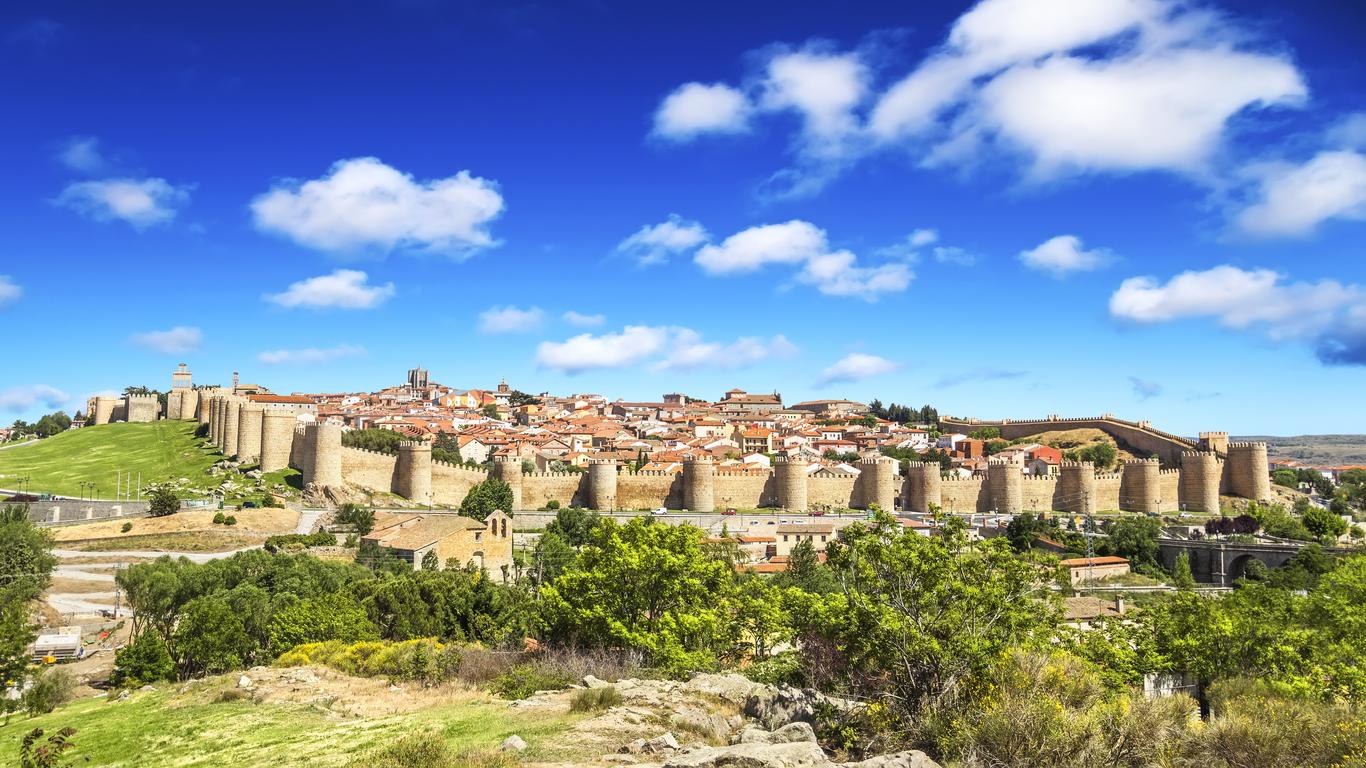Designated as a UNESCO World Heritage Site, Ávila is a beautifully preserved walled city north-west of Madrid. Positioned at 1,130 metres, it is the highest provincial capital in Spain and is often referred to as the “Town of Stones and Saints” due to its high concentration of Romanesque and Gothic churches.
Things to do in Ávila
Marvel at Ávila’s magnificent walls, which are considered among the finest in the world. Stretching for 2.5 kilometres, they are roughly three metres thick and interspersed with gates and turrets dating back to the 12th century. It’s possible to walk atop part of the walls (which are beautifully illuminated at night) while the remaining section is navigable along the base.
Don’t miss the Basilica of San Vicente, which is one of the best examples of Romanesque architecture in Spain. It was constructed in the 12th century on the site where Vicente, Sabina and Cristeta were martyred during the rule of Roman Emperor Diocletian. Both the western and southern gates are richly decorated while the crypt is dedicated to the Virgen de la Soterraña.
Built by the Carmelites in the 17th century is the Iglesia-Convento de Santa Teresa, which has been designated as a Spanish Property of Cultural Interest since 1886. It was constructed on the site where Saint Teresa of Ávila was born, with its chapel decorated in religious imagery and gilded embellishments. The complex features a replica of the room where Saint Teresa once lived, complete with a wooden-pillared bed and a writing desk.
Getting around Ávila
Ávila is around 1.5 hours’ drive from Madrid and Adolfo Suarez Madrid–Barajas Airport. Regular trains connect from the Spanish capital to the Ávila railway station and buses travel throughout the city. The centre of Ávila can easily be explored on foot.





